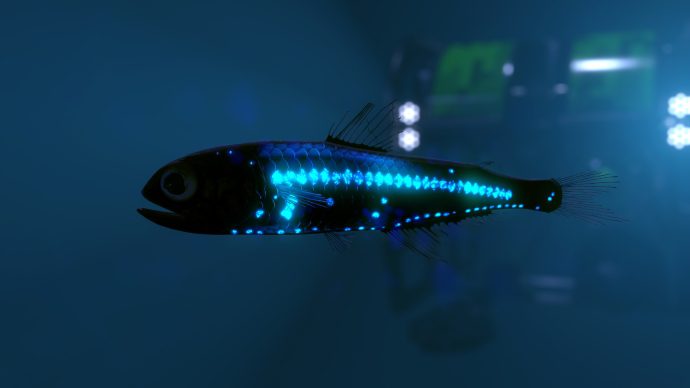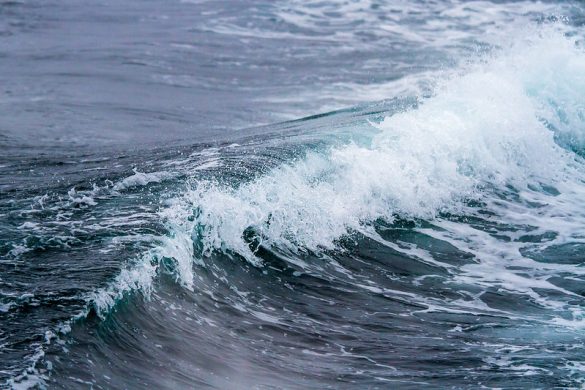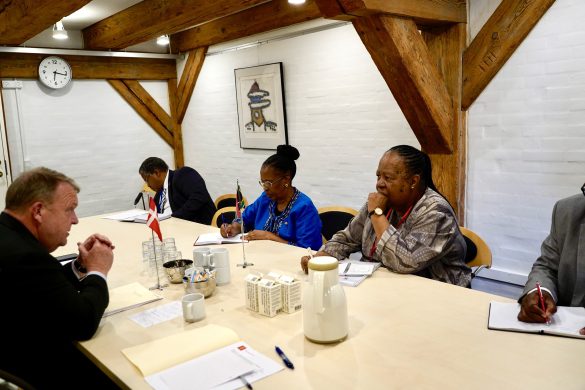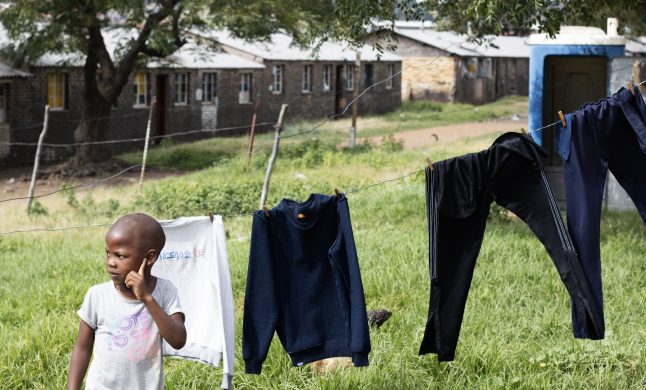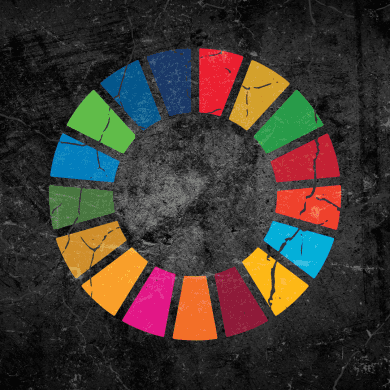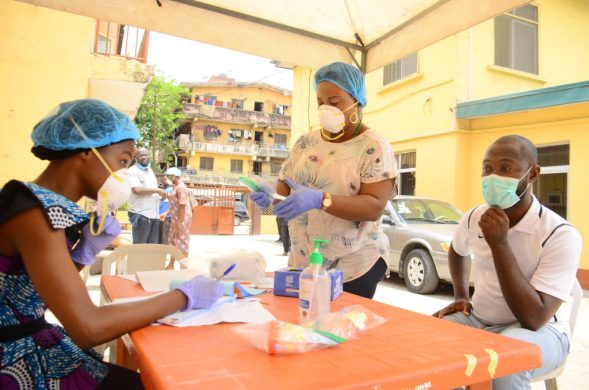Små, afsides ø-nationer er i stor fare for at ende på havets bund grundet klimaforandringer, men de har meget at vinde ved at omlægge til en grøn økonomi, der er bæredygtig og socialt inkluderende, skriver FN.
NAIROBI, 24 February 2014: Creating the enabling conditions for a Green Economy transition in Small Island Developing States (SIDS)from improved public investment to reliable market instruments and better governance will help the estimated 50 million SIDS residents build climate resilience, achieve economic growth and enjoy better standards of living.
The transition will offer opportunities for SIDS to better manage natural capital, protect the environment, create green jobs and achieve sustainable development, according to studies by the United Nations Environment Programme (UNEP).
UN Under-Secretary-General and UNEP Executive Director Achim Steiner said, “For many Small Island Developing States future development is dependent on a very narrow resource base that is constantly challenged by the high-risk impacts of climate change and natural disasters. In our lifetime, there may be small island developing nations that will cease to exist as a result of sea level rise.”
“From economic growth to climate change and food security, the issues facing SIDS are multi-dimensional and require integrated action to address them. An inclusive Green Economy approach offers opportunities for SIDS to better manage natural capital, protect the environment, create green jobs and achieve sustainable development. For this end, it is vital that the right enabling conditions are provided to generate and stimulate both public and private sector investments that incorporate broader environmental and social criteria,” he added.
ADDRESSING CLIMATE CHANGE VULNERABILITY
SIDS are known to be especially vulnerable to climate change due to their small size, narrow resource base, high susceptibility to natural hazards, low economic resilience, and limited human and technological capacity.
In 2007, the Intergovernmental Panel on Climate Change (IPCC) estimated that global warming will lead to a sea-level rise of 180 to 590 mm by 2100, while more recent research suggests that these estimates are likely to be at least twice as large.
Nations such as Kiribati, Maldives, Marshall Islands and Tuvalu will become uninhabitable in this scenario, while a large share of the population of many other SIDS will be displaced or otherwise adversely impacted.
These negative impacts come even though the combined annual carbon dioxide output of SIDS accounts for less than one per cent of global emissions, meaning they have not contributed significantly to climate change. However, SIDS emissions are on the rise: from 1990 to 2006, CO2 emissions of SIDS increased at an average annual rate of 2.3 per cent.
Adverse impacts on drinking water and agricultural production are expected due to saline intrusion on coastal aquifers and the destruction of coral reefs and fishery habitats from temperature rises and increased ocean acidification.
Other climate-change impacts include the destruction of infrastructure and development gains due to stronger tropical cyclones, such as those in 2004 (Grenada, Haiti and Niue), 2005 (the Cook Islands) and 2008 (Cuba, Fiji and Haiti).
For instance, Hurricane Ivan damaged 90 per cent of the housing stock of the island of Grenada, with an estimated impact of US $527 million or 38 per cent of the country’s GDP, according to the Organization of Eastern Caribbean States (OECS).
Climate change adaptation has been identified as a top priority for SIDS. It also represents a major economic cost; the capital cost of sea level rise in the Caribbean Community Countries alone is estimated at US $187 billion by 2080 under a business-as-usual scenario.
SUSTAINABLE ENERGY TRANSITION ESSENTIAL
Many SIDS have little or no access to modern and affordable energy sources, and energy prices are among the highest globally. In some cases electricity cost is 500 per cent more than in the US, primarily as a result of the dependence on imported petroleum fuels.
Consequently, the energy sector in the vast majority of SIDS is the principal source of CO2 emissions and economic vulnerability. Power generation consumes in excess of 50 million barrels of petroleum annually to provide 90 per cent of primary energy.
Improving the SIDS power sector requires fossil fuel dependence to be halved by 2035 via a switch to renewable energy sources (ocean, geothermal, solar, wind and biofuels). Caribbean Community Countries estimate the shift could cost tens of billions of US dollars.
Transportation, meanwhile, consumes in excess of 100 million barrels of fuel annually. Reducing this by 25 percent by 2035 will require new technologies, infrastructure and financial support.
At the same time, individual countries have embarked on projects to improve energy efficiencies,:
- n the Pacific, the national energy policies of Fiji and Vanuatu promote the production of biofuels through planting on degraded lands;
- In Fiji, Solomon Islands, Samoa and Vanuatu hydropower is increasingly being used for electricity production;
- In Barbados and Antigua, the government has provided subsidies to encourage the use of solar water heaters;
- Commercial biomass has become an important source of renewable energy in many SIDS, mostly as a spin-off from sugarcane production.
SMALL-SCALE FISHERIES AND AQUACULTURE
Fisheries play a significant role in the economy, livelihoods and food security of SIDS, who hold jurisdiction over coastal waters and open seas many times larger than their land mass. Fisheries-generated GDP in some SIDS is estimated at up to 12 per cent of the total.
Fish consumption in the Pacific SIDS accounts for 50-90 per cent of animal protein in the diet of coastal communities, while national fish consumption can be as much as 3-4 times higher than the global average per capita.
Climate change is anticipated to indirectly affect fisheries in SIDS, as changing water temperature impacts negatively on coral reefs and mangroves that function as nurseries, habitats and foraging grounds for fish. Associated shifts in migratory patterns of fish species are expected to affect availability.
Other threats to fisheries include: pollution, habitat loss and alteration, destructive harvesting methods, overexploitation, invasive species and natural disasters. Amid those challenges, the fisheries sector is expected to meet the demands of a growing population.
A “green economy” fishery sector is one that is ecologically sustainable, provides a higher level of economic goods and services at lower environmental costs and equitably distributes those benefits.
Transitioning to a green economy will require introducing specific measures for policy planning and institutional reform, sustainable financing, investment in technology and building public awareness.
GREENING THE TOURISM SECTOR
For more than half of the SIDS, tourism is their largest source of foreign exchange and tourism receipts represent more than 30 per cent of their total exports. In comparison, the average for the world is just over 5 per cent, according to World Bank estimates.
Climate change presents one of the most significant challenges to the sector. Rising sea levels can cause loss of land along coastlines of low-lying islands, disrupting economies and livelihoods.
Climate change may cause coral bleaching to become an annual occurrence causing further losses in revenue. Dominica has reported that 50 per cent of its corals are bleached, and coral bleaching in Tobago affected an average of 66 per cent of its hard corals in 2005 alone.
The tourism industry is a major consumer of both energy and water. Given that most SIDS import their energy supplies and face challenges with regard to water availability and quality, investment in greening tourism is vital to reducing additional burdens placed on related sectors.
The tourism industry should be one of the lead industries in the promotion of green initiatives, being both an industry dependent on natural resources and a major contributor to employment and economic growth.
Greening tourism requires a shift across the entire industry to the implementation of policies, practices and programmes that embrace sustainability with a focus on the conservation of natural resources, transitioning towards renewable sources of energy, reduction of water consumption and generating income for local communities.
TOWARDS AN INCLUSIVE GREEN ECONOMY
The overall goals of a green economy are supportive of the sustainable development concept, which has as its main objectives development and poverty eradication predicated on the sustainable use of environmental resources.
It is vital that the right enabling conditions are provided to generate and stimulate both public and private sector investments that incorporate broader environmental and social criteria.
Several recommendations have been presented for enabling the transition to an inclusive green economy, including: increasing public investment in Green Economy activities, developing market-based instruments, revising legislative and regulatory frameworks and enhancing institutional capacity.
Economic valuation of environmental capital and social equity underpins the capacity of policy makers to make balanced policy choices in pursuit of sustainable development.
UNEP has also recently launched a unique new Foresight Process to identify and prioritize global emerging environmental and sustainability issues from the perspective of the SIDS.
The Foresight Process will contribute to the Third International Conference on SIDS in 2014.
UNEP is also working with partners to produce a Guidance Manual on Valuation and Accounting of Ecosystem Services for Small Islands Developing States, which aims to develop the capacity of governments to integrate economic valuations of environmental capital into sustainable development planning and implementation.



